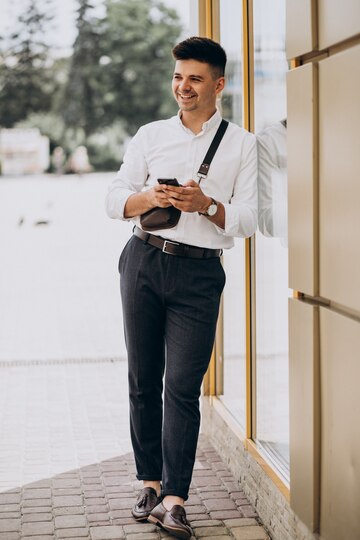
In the ever-evolving landscape of workplace culture, the concept of business casual attire has become increasingly prevalent. Gone are the days of rigid, formal dress codes dictating every aspect of professional attire. Instead, many organizations are embracing a more relaxed approach to dress while still maintaining a level of professionalism. However, navigating the nuances of business casual can be challenging, as it requires striking a delicate balance between comfort and professionalism.
The Origins of Business Casual
The term “business casual” first emerged in the 1980s as a response to the changing dynamics of the workplace. As companies sought to foster a more relaxed and inclusive environment, they began to relax their dress codes, allowing employees to dress in a manner that was both comfortable and appropriate for the office setting.
Initially, business casual attire was seen as a compromise between traditional business attire, such as suits and ties, and casual clothing, such as jeans and t-shirts. It typically included items like collared shirts, slacks, and loafers for men, and blouses, skirts, and dress pants for women. The goal was to maintain a professional appearance while providing employees with greater freedom and flexibility in their wardrobe choices.
The Evolution of Business Casual
Over the years, the definition of business casual has evolved, reflecting changing cultural norms and attitudes towards work and fashion. Today, business casual attire encompasses a wide range of styles, from smart-casual outfits suitable for client meetings to more relaxed ensembles appropriate for casual Fridays https://www.thomsonchemmanoor.com.
One of the key drivers of this evolution has been the rise of technology and the proliferation of startups and creative industries. As tech companies and startups began to challenge traditional corporate norms, they brought with them a more casual approach to work attire. Hoodies, jeans, and sneakers became synonymous with innovation and entrepreneurship, blurring the lines between work and leisure.
At the same time, the rise of remote work and flexible schedules has further blurred the distinction between professional and personal life. With more employees working from home or in co-working spaces, there is less pressure to adhere to traditional dress codes. As a result, many companies have adopted a more relaxed approach to attire, recognizing that what matters most is the quality of the work produced rather than the clothes worn.
Navigating the Fine Line
Despite the growing acceptance of business casual attire, navigating the fine line between professionalism and comfort can still be challenging. While some companies embrace a more casual dress code, others maintain stricter standards, requiring employees to adhere to traditional business attire.
For employees, understanding the expectations of their company and industry is crucial. It’s essential to dress in a manner that reflects the company culture while still projecting a professional image. This may require some trial and error, as what constitutes appropriate attire can vary widely depending on the context.
Additionally, it’s important to remember that business casual does not mean sloppy or unkempt. Even in a more relaxed setting, it’s essential to dress neatly and presentably, paying attention to details such as grooming and accessorizing.
For employers, clearly communicating expectations around dress code is essential. Providing guidelines and examples of appropriate attire can help employees navigate the nuances of business casual and ensure that everyone is on the same page.
Ultimately, the evolution of business casual reflects broader shifts in workplace culture towards greater flexibility and inclusivity. By embracing a more relaxed approach to attire, companies can create a more comfortable and productive work environment while still maintaining a level of professionalism. However, striking the right balance between comfort and professionalism requires clear communication, mutual respect, and a willingness to adapt to changing norms and expectations.


